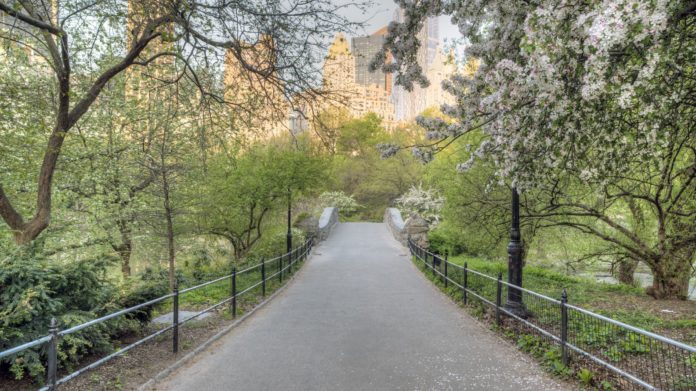Excerpt from urban forestry research paper
Fifty-five percent of people live in cities globally, and it is expected that this number will rise to sixty-eight percent by 2050 (UN Department of Economic and Social Affairs, 2018). In the U.S., eighty percent of the population already lives in cities. There is constant pressure to develop housing and infrastructure to support this growth. At the same time, climate change is impacting cities in alarming ways, and they are finding themselves woefully unprepared.
Trees offer solutions to a variety of urban problems. Foremostly, urban forests reduce temperatures by providing shade. An analysis done by the New York Times in New York City revealed a full 31 degree Fahrenheit difference between a tree-lined block near Central Park and a treeless sanitation lot in East Harlem. Lack of trees creates a heat island effect, in which temperatures are significantly warmer in urban areas with less greenery. Impervious surfaces, such as asphalt and concrete, exacerbate temperatures by absorbing and re-emitting heat. The shade of mature trees can lessen the need for energy-intensive cooling techniques like air conditioning, helping to keep energy costs down.
Trees provide many additional benefits. They can improve urban water quality by capturing rainfall and slowly releasing it into the groundwater through their roots, all the while purifying the water of pollutants through the surrounding soil. Trees can also remove toxic particulate matter in the air, helping to mitigate health risks from air pollution. In addition, trees improve quality of life and associated property values. According to a study conducted by the U.S. Forest Service and UC Davis, trees throughout the state of California add a total of $839 million to property values. It is much more desirable to spend time on a property surrounded by trees instead of a desolate concrete jungle.
Numerous studies have shown that being near trees can reduce anxiety, stress, and depression in urban citizens. For example, a study done in the German city of Leipzig revealed that people living within 100 meters of a tree on average showed a lower usage of antidepressants (World Economic Forum, 2021).
Lastly, trees are paramount to the health of urban biodiversity. They serve as shelter for birds and other animals, and provide food such as acorns. Without trees, cities risk losing wildlife, further harming native ecosystems and the wellbeing of urban residents who look to nature for comfort.
While tending to trees in civilized areas is a practice dating back centuries, urban forestry (UF) is a relatively new term that became mainstream in the mid-late 1900s. UF most simply refers to “the management of trees for their contribution to the physiological, sociological and economic well-being of the urban society” (Municipal Technical Advisory Service of Tennessee, 2021). The United States did not recognize UF officially until 1978, leading to the very beginning of federal funding for UF. Due to climate change and rapid urbanization, as explained above, UF has risen to prominence worldwide as an interdisciplinary, economically-efficient solution.
